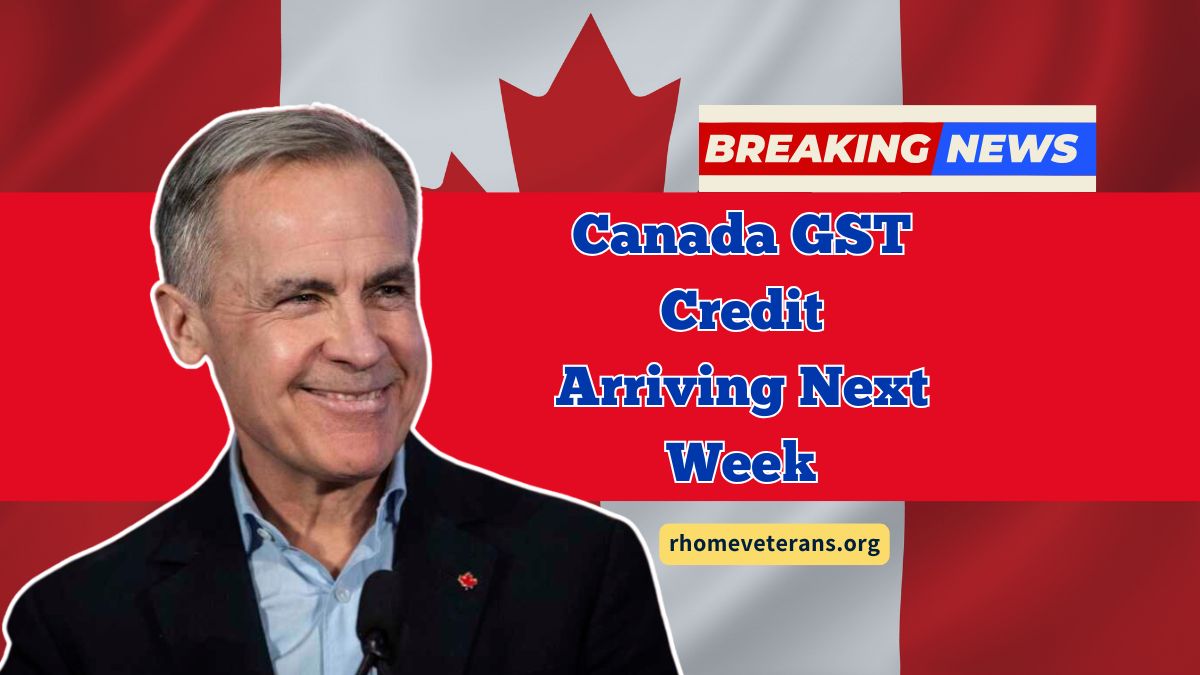Low- and modest-income Canadians are set to receive some welcome financial relief next week as the Canada Revenue Agency (CRA) distributes the next round of GST/HST credit payments. This tax-free quarterly benefit helps offset the burden of sales tax and provides timely support during a period of rising living costs.
If you’re wondering who qualifies, how much you can get, and how to claim the benefit, this guide breaks down everything you need to know about the Canada GST Credit in 2025.
What Is the Canada GST/HST Credit?
The Goods and Services Tax (GST)/Harmonized Sales Tax (HST) credit is a tax-free quarterly payment issued by the CRA to assist low- and middle-income individuals and families. The goal is to reduce the impact of consumption taxes on essential goods and services.
The credit is automatically calculated when you file your annual income tax return—you don’t have to apply separately. If you’re eligible, the CRA deposits the amount directly into your bank account or mails a cheque.
Next Canada GST Credit Payment Date
The next payment date for the GST/HST credit is:
| Next Payment Date | July 5, 2025 |
You can expect the funds to be deposited directly into your bank account or mailed on or shortly after this date. The remaining 2025 payment dates are scheduled for:
- October 4, 2025
- January 3, 2026
How Much Is the GST Credit in 2025?
The amount you receive depends on your net family income, marital status, and number of children. Below is a breakdown of maximum benefits:
| Recipient Type | Maximum Annual Credit |
|---|---|
| Single adult | $519 |
| Married/common-law couple | $680 |
| Per child (under 19 years) | $179 per child |
Note: Actual payment amounts may be reduced based on your income level.
Who Can Claim the GST/HST Credit?
To qualify for the Canada GST Credit, you must:
- Be a resident of Canada for tax purposes at the beginning of the month the CRA makes the payment.
- File a tax return for the 2024 tax year (even with zero income).
- Meet one of these conditions:
- Be 19 years or older, or
- Have (or had) a spouse/common-law partner, or
- Be a parent and live with your child.
You must also meet income eligibility thresholds. Here are key limits:
| Household Type | Maximum Net Income to Qualify |
|---|---|
| Single individual | Up to $52,255 |
| Married couple with four children | Up to $69,015 |
If your income exceeds these limits, your credit will be reduced or eliminated.
How to Claim the GST/HST Credit
1. File Your Taxes
Simply file your 2024 tax return, even if you had no income. The CRA will automatically assess your eligibility based on the information provided.
2. Newcomers to Canada
If you’re new to Canada and haven’t filed taxes previously, complete one of the following:
- Form RC66 – Canada Child Benefits Application (if you have children)
- Form RC151 – GST/HST Credit Application for Individuals Who Become Residents of Canada (if you do not have children)
Both forms are available on the CRA website or through CRA My Account.
3. Update Your Information
Ensure that your marital status, number of children, and direct deposit information are current to avoid delays.
The Canada GST/HST Credit provides vital financial relief for low- and moderate-income Canadians. With the next payment scheduled for July 5, 2025, eligible individuals should ensure they’ve filed their taxes and updated any personal details to receive their payment without interruption.
Whether you’re single, a parent, or newly arrived in Canada, the GST credit is a valuable source of support that helps stretch your budget further. Don’t miss out—check your eligibility and tax filing status today
FAQs
Do I need to apply separately for the GST/HST credit?
No. If you’re a Canadian resident and file your taxes, the CRA will automatically determine your eligibility.
What if I didn’t earn any income last year?
You should still file your tax return, as you may still qualify for the credit based on your household situation.
How will I receive my GST payment?
Payments are directly deposited to your bank account or sent via cheque, depending on your CRA payment preferences.

